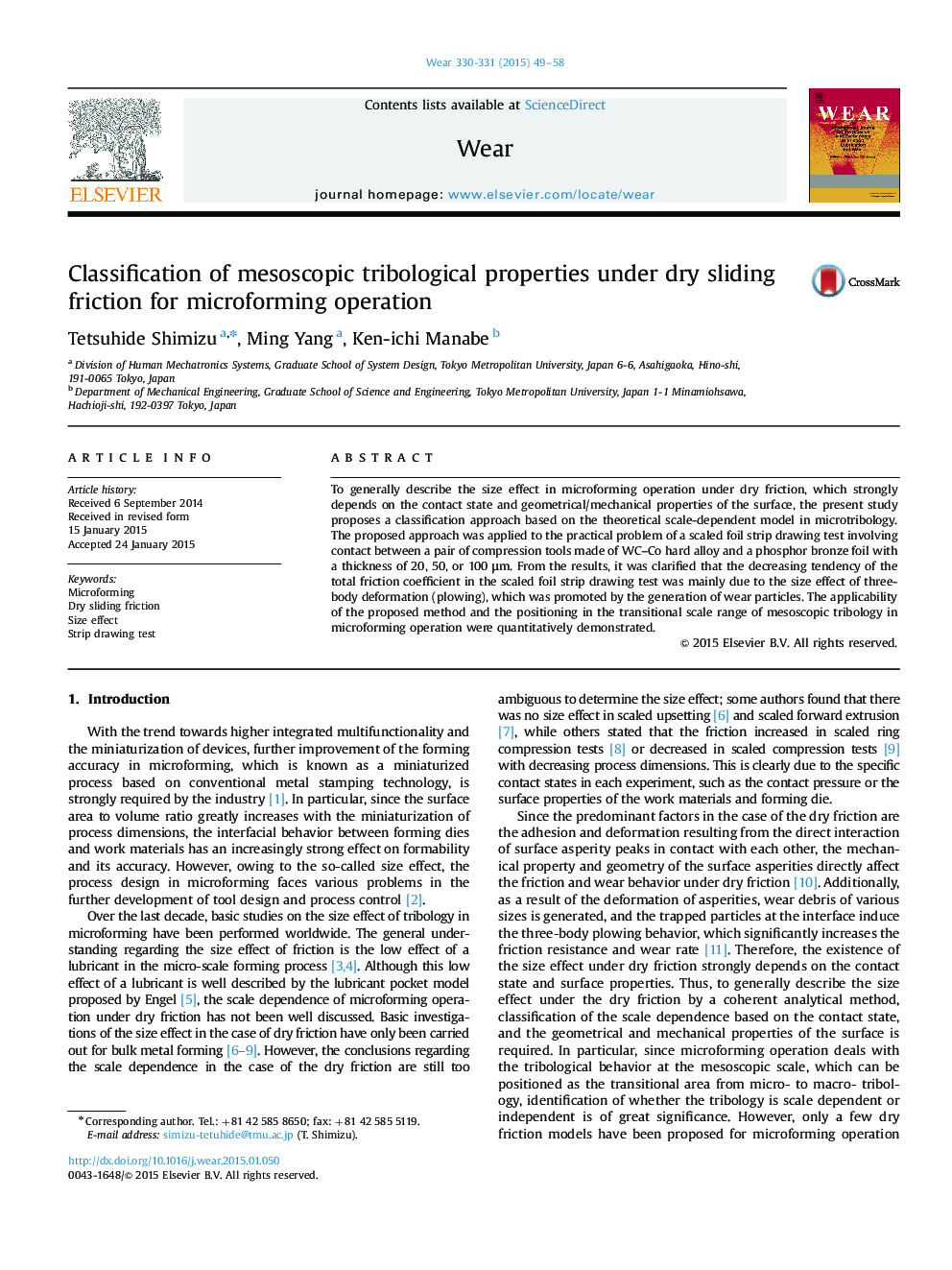| Article ID | Journal | Published Year | Pages | File Type |
|---|---|---|---|---|
| 7004278 | Wear | 2015 | 10 Pages |
Abstract
To generally describe the size effect in microforming operation under dry friction, which strongly depends on the contact state and geometrical/mechanical properties of the surface, the present study proposes a classification approach based on the theoretical scale-dependent model in microtribology. The proposed approach was applied to the practical problem of a scaled foil strip drawing test involving contact between a pair of compression tools made of WC-Co hard alloy and a phosphor bronze foil with a thickness of 20, 50, or 100 μm. From the results, it was clarified that the decreasing tendency of the total friction coefficient in the scaled foil strip drawing test was mainly due to the size effect of three-body deformation (plowing), which was promoted by the generation of wear particles. The applicability of the proposed method and the positioning in the transitional scale range of mesoscopic tribology in microforming operation were quantitatively demonstrated.
Related Topics
Physical Sciences and Engineering
Chemical Engineering
Colloid and Surface Chemistry
Authors
Tetsuhide Shimizu, Ming Yang, Ken-ichi Manabe,
